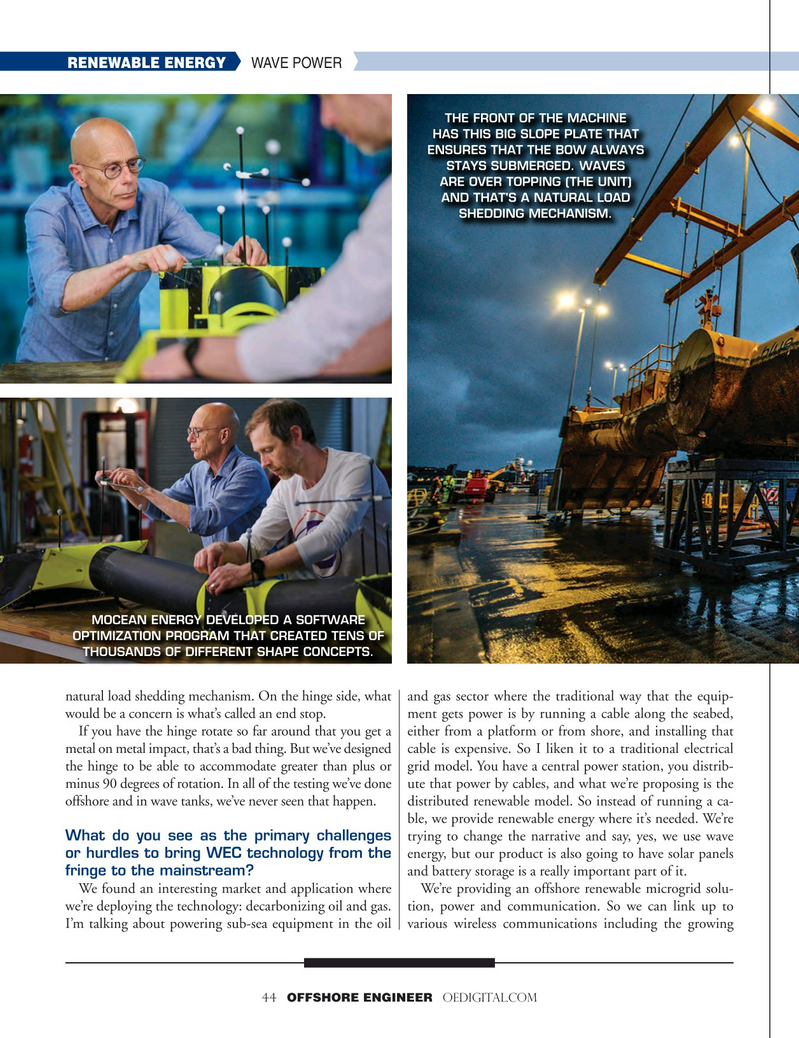
Page 44: of Offshore Engineer Magazine (Jan/Feb 2024)
Read this page in Pdf, Flash or Html5 edition of Jan/Feb 2024 Offshore Engineer Magazine
RENEWABLE ENERGY WAVE POWER
THE FRONT OF THE MACHINE
HAS THIS BIG SLOPE PLATE THAT
ENSURES THAT THE BOW ALWAYS
STAYS SUBMERGED. WAVES
ARE OVER TOPPING (THE UNIT)
AND THAT'S A NATURAL LOAD
SHEDDING MECHANISM.
MOCEAN ENERGY DEVELOPED A SOFTWARE
OPTIMIZATION PROGRAM THAT CREATED TENS OF
THOUSANDS OF DIFFERENT SHAPE CONCEPTS. natural load shedding mechanism. On the hinge side, what and gas sector where the traditional way that the equip- would be a concern is what’s called an end stop. ment gets power is by running a cable along the seabed,
If you have the hinge rotate so far around that you get a either from a platform or from shore, and installing that metal on metal impact, that’s a bad thing. But we’ve designed cable is expensive. So I liken it to a traditional electrical the hinge to be able to accommodate greater than plus or grid model. You have a central power station, you distrib- minus 90 degrees of rotation. In all of the testing we’ve done ute that power by cables, and what we’re proposing is the offshore and in wave tanks, we’ve never seen that happen. distributed renewable model. So instead of running a ca- ble, we provide renewable energy where it’s needed. We’re
What do you see as the primary challenges trying to change the narrative and say, yes, we use wave or hurdles to bring WEC technology from the energy, but our product is also going to have solar panels fringe to the mainstream? and battery storage is a really important part of it.
We found an interesting market and application where We’re providing an offshore renewable microgrid solu- we’re deploying the technology: decarbonizing oil and gas. tion, power and communication. So we can link up to
I’m talking about powering sub-sea equipment in the oil various wireless communications including the growing 44 OFFSHORE ENGINEER OEDIGITAL.COM

 43
43

 45
45